‘Island weather’ at the 58th Venice Art Biennale: Walking on cobwebs of metal, memory and magic realism
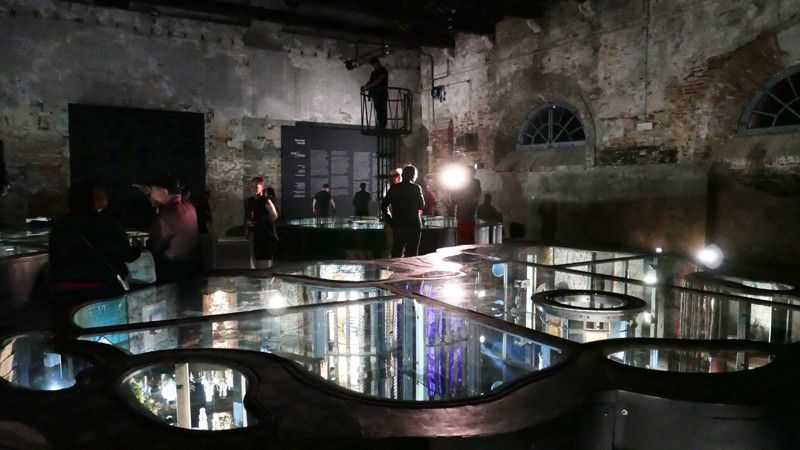
VENICE, Italy — You gaze into the abyss of Mark Justiniani’s modules of metal, glass, mirrors, resin and an archipelago of forms and objects (ladders burrowing down the depths of nowhere, drawers stacked upon each other with their secrets, as well as mementos and assorted amulets of a nation examining itself) — and the abyss gazes back at you. Everything is mapped out in the vast room at the Artiglierie in Arsenale as “delicate but colossal,” monolithic yet meditative island-like pieces of architecture. An excavation of history, identity and collective memory. Visitors come and go and walk out onto either the sun-dappled or rain-soaked stone-grounds of Venice — mind blown, eyes wide open, their belief invariably and unfailingly suspended.
Quite a feat Justiniani has pulled off in his “Island Weather” exhibition curated by Tessa Maria Guazon at the Philippine Pavilion for the La Biennale di Venezia 58th International Art Exhibition. Words seem beggarly in describing what the artist has created for our country’s latest participation at the Venice Biennale. You just have to see it, encounter it, and immerse yourself in it.

“This idea of excavation pertains to excavating memories,” explains artist Mark Justiniani. “Unearthing things that have been buried throughout our history.” Photo by Andrea D’Altoe
Inside the three biomorphic modules (only two feet from the base up!) are entire “worlds” altogether (achieved by stacking mirrors that trick us into seeing the march of infinity before our very eyes; ah, the magic of optics). It is like Blade Runner meets The Matrix meets Alice Through the Looking-Glass with a Symbolist commentary by Filipino poet Cirilo Bautista about how “side by side moves these islands whose chamber of wisdom is the tomb” and how bones “sing like a book, beyond indigenes and ultimatums…” (from Trilogy of Saint Lazarus).
“We refer to weather not just in the atmospheric sense, but also as a metaphor for the state of the world and all the predicaments we currently face — conditions not just facing us Filipinos, but also by people across the globe,” explains Guazon. It takes off from the concept of “Sandaigdigan” (One World), how everything or everyone is interwoven and connected with each other. It is the first time that Justiniani has undertaken an “Infinity” project in such a grand, massive scale.
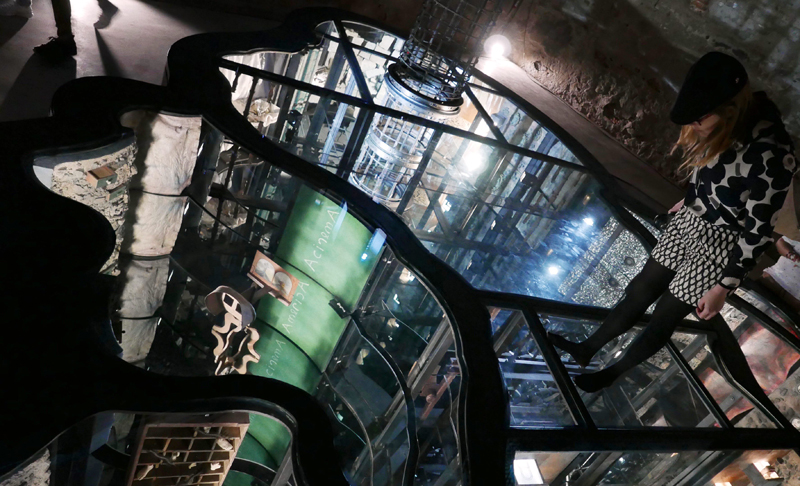
Into the void: A visitor takes a stroll across one of the biomorphic islands.
Tessa continues, “We want viewers to experience a sense of wonder. A lot of us adults have forgotten how to wonder.” In encountering the “Arkipelago” modules, visitors walk on glass — their “bodies seemingly disappear in space” but their “eyes remain.” They know the modules are shallow in actuality, but the illusion provided by mirrors makes them seem infinite and gives visitors the fear of falling through: like virtual holes in the ground, or voids in the mouth of gravity.
“The project (deals with) aspects of national history,” she explains. “We were inspired by structures across the archipelago, particularly in the Central Visayas islands — lighthouses, sugar plantations and seats of power.” Even Siquijor with its air of strange magic is represented. The objects — from public school armchairs to cockfight talons, from electricity meters and what-not — are not direct representations but are vignettes of forms that imply vignettes of stories.
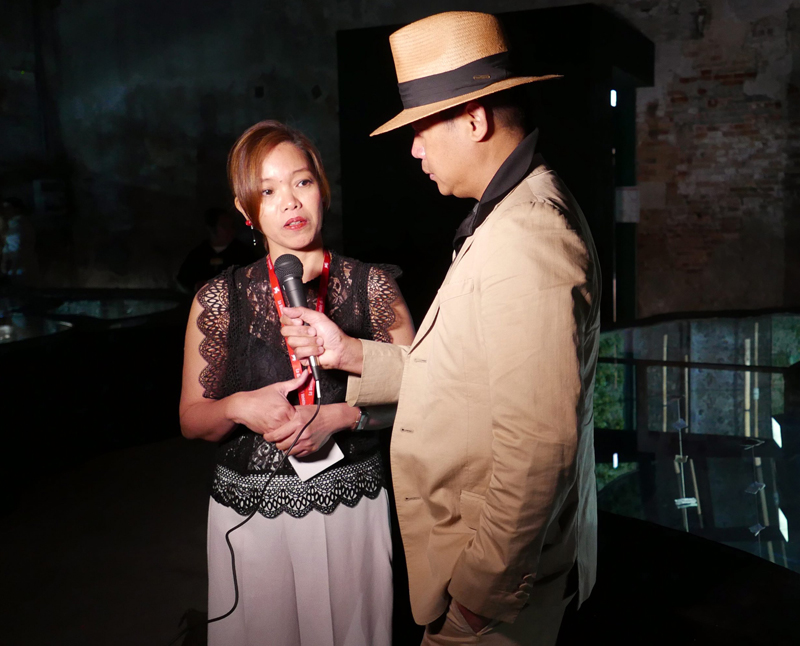
Curator Tessa Maria Guazon gets interviewed during the vernissage.
“The plan was to build an excavation site,” Mark explains further. The intent was to construct biomechnical forms (both biological and industrial) with innards, intestines and inner workings that present the life of a simple people (we as Filipinos) amid power structures and our troubled past, and how we try to build our future upon the turbulence, terrors and twists of history.
Justiniani has done projects that are similar (“Mimefield” in 2012, for one), but not in this scale and shape (difficult to render, with angular lines instead of straight or purely round ones). “The idea of excavation also pertains to excavating memories,” he continues. “Unearthing things that have been buried throughout our history.”
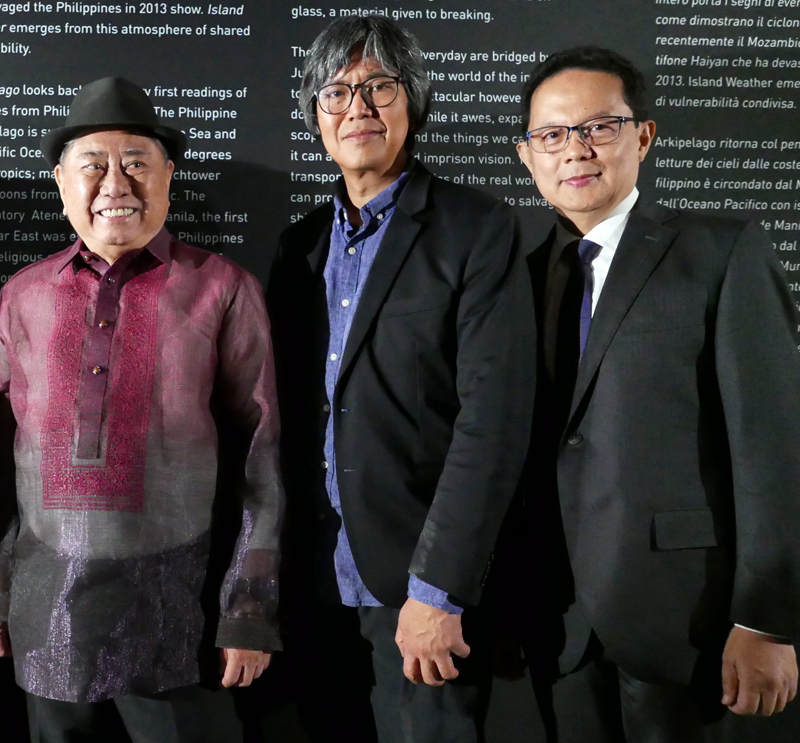
Mark Justiniani is flanked by National Artist for Literature and National Commission for Culture and the Arts (NCC A) chairman Virgilio Almario and Philippine Ambassador to the Italian Republic Domingo Nolasco. NCC A chairman Almario, also the commissioner of the Pavilion, says, “When we join the global contemporary art stage, we get exposed to the process and discipline of mounting these kinds of exhibitions. Our participation allows us to interact with the global art community which helps inform our own process and thinking. Most importantly, our participation in the Venice Biennale gives us a voice to tell our truths and respond to what the rest of the world is discussing.”
Tessa agrees, “What we want to present is a kind of vision that burrows into appearances. We are used to scanning the world in a certain way (from side to side).” This time, the spiral goes downward.
With its illusion of depth, bending of space, and toying with one’s sense of gravity, the entire installation will make visitors think something magic-realistic is afoot, something straight from the pages of Latin-American literature that we Filipinos share an uncanny affinity with.
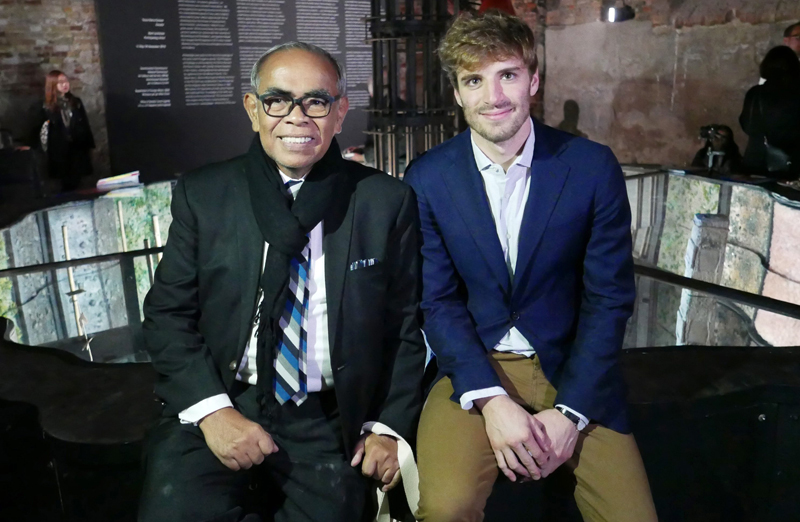
Dr. Joven Cuanang and Pintô International director Luca Parolari
Tessa answers, “When I started putting together the concept, I wasn’t thinking about magic realism or any such association. What I had in mind was to explore a thread of a research that I had been doing. I am interested in places. I am interested in how we locate ourselves in the world.” In an exhibition in 2017, the curator titled her section “Plying the Seas, Divining the Skies.” She had that kind of interest as well as a stew of childhood stories, mulling over the question of how to link our very real world, our everyday world with the notions of the fantastic and the magical. Guazon stresses, “But I was not thinking along the lines of magic realism.”
Mark shares, “I was thinking about magic realism (laughs). And I love Gabriel Garcia-Marquez — how he reads and how he combines the real and the fantastic.” Sort of what our homegrown artist has achieved with his art installations: metal, glass, mirrors and resin in themselves are mundane and ordinary, but when someone like Justiniani puts them together, the effects are oracular, revelatory and wild.

Folco Soffietti and Joy Mallari
“My interest in science comes in with (my use of) mirrors which represent the most accurate mimicry of reality,” he shares. “If you have two mirrors facing each other, you get this tunnel of infinity. And yet they replicate something that doesn’t really look that way. All our vision is filtered through our senses. We see the world only though a color-field. But there is a whole spectrum of light that we do not see, such as ultraviolet, gamma rays, microwaves, infrared.” There is much, much more to world than what we can grasp with our limited senses, reiterates the artist who digs quantum physics, optics and Plato’s philosophy.
Justiniani adds, “The work is a reminder that we are looking at an illusion — even in reality.”
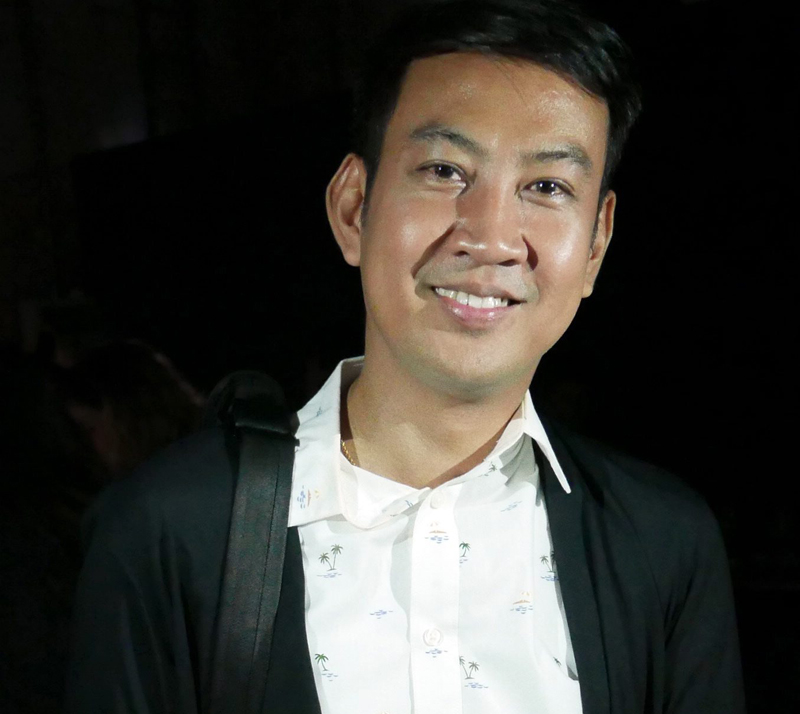
The STAR Art & Culture columnist Carlomar Daoana
It was raining in Venice when Mark Justiniani and his team arrived. It was bleak, gray and wet everywhere. Oh, how life imitates art: the crew had to suffer through bad weather while putting together the pieces for “Island Weather.” (Mark says it was too cold in the pavilion, and there were also problems with dust particles.) Even before that, back in Manila, the artist had to grapple with pneumonia while working on the pieces for the exhibition. He laid on a stretcher, sickly and weakened, looking at the hospital ceiling with its procession of lights. The doctor admonished the artist to take it easy for a while.
But “Island Weather” is also a meditation on how fortunes change overnight.
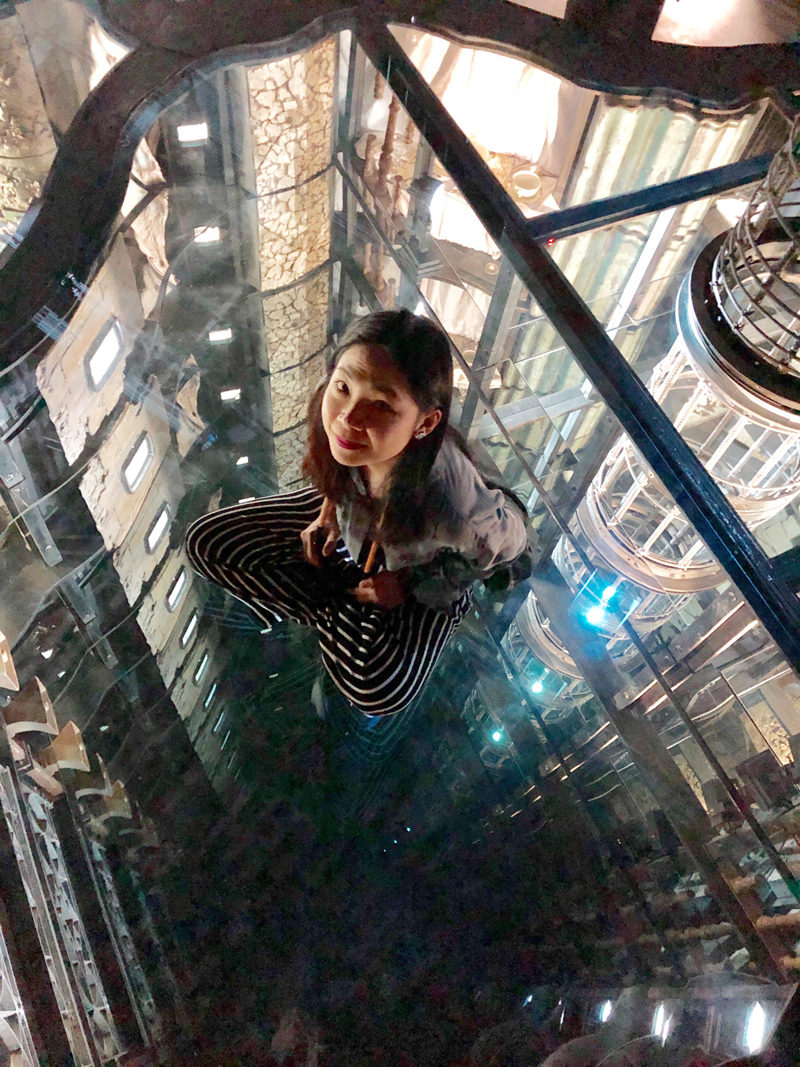
Photographer Avee Navarro Tan
Now, Justiniani has gotten to see his vision turned flesh, walking around the biomorphic archipelago of his own making, humbly stating that he considers everything 99 percent complete, even attending cocktails held at a place called — this is synchronicity in action — Ca’ Giustinian.
Somewhere in the palatial hall which echoes his name, the man is probably thinking of new, bigger and bolder ways to mimic the infinite.
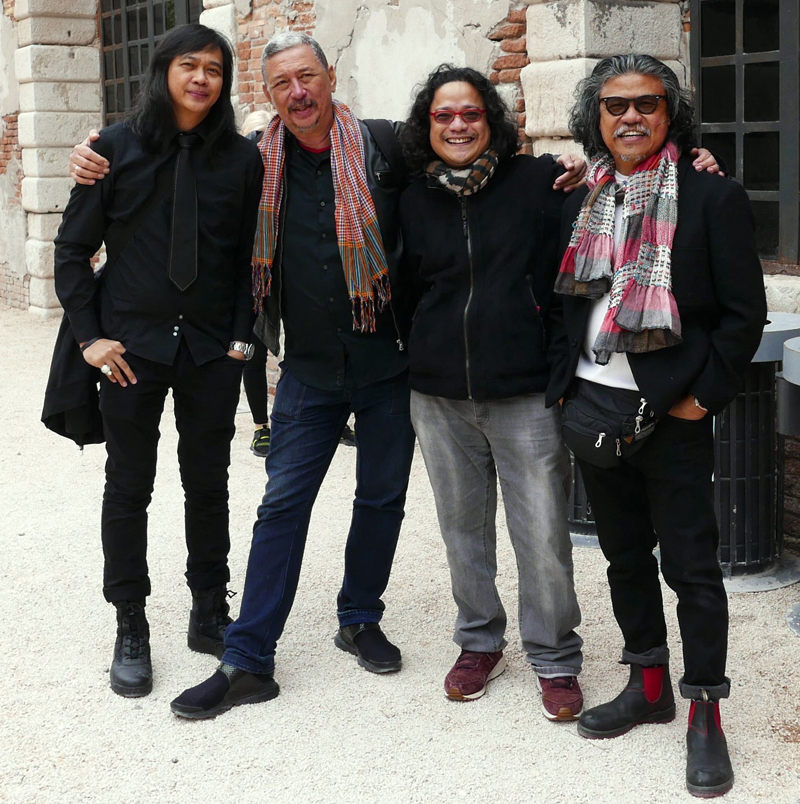
Artists Igan D’Bayan, Jose Tence Ruiz, Dengcoy Miel and Pete Jimenez
* * *
“Island Weather” is presented by the National Commission for Culture and the Arts (NCCA), headed by its chairman Virgilio Almario, Department of Foreign Affairs (DFA), and the office of Senator Loren Legarda. The Philippine Pavilion had its vernissage last May 11. Mark Justiniani’s exhibition is on view until Nov. 24. For information, call the Philippine Arts in Venice Biennale (PAVB) at 527-2192 local 727.



















